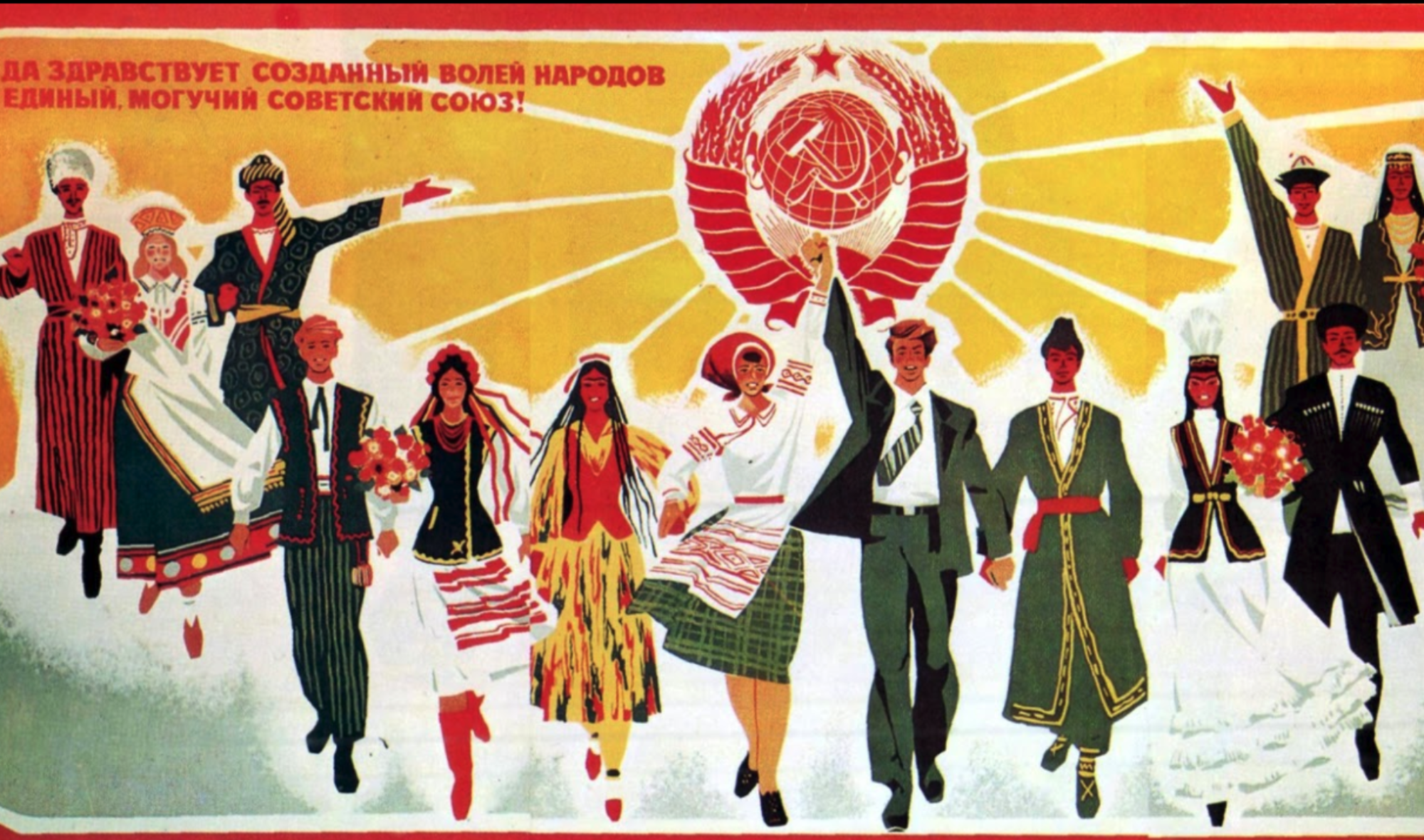
In today’s world, science fiction does not emulate the same ideas and creations that were once illustrated in 20th century Russian films and literature as opposed to modern day cinematics. Aliens that burst from human chests or tornadoes that project sharks on to civilians would not be science fiction ideas that would be taken seriously by the Soviet Union during the 20th century. Instead, science fiction was to be utilized as a way to promote utopianism. The Soviet government saw science fiction as the key to opening the door of technological and scientific advancement, as well as using fictictions as a way to modernize at a faster rate than the rest of the world; especially during Lenin’s New Economic Policy and the period of the Cold War. Science fiction was used to strengthen Soviet power by using scientific-based ideas to advance the Soviet Union to the point of being able to explore the maximum limitations of human biology, earth, and outer space. However, before an explanation can be given to demonstrate how science fiction was utilized, an explanation of the origins of science fiction in Russia must be given first.
Aelita, a film done in 1924 by director Yakov Protazanov is considered to be the first Russian Science Fiction Film. However, it differs from the contemporary, generally accepted themes of Sci-Fi media, in that the characters never make it to space. Although the protagonist, Los, is depicted on a great adventure in a world far far away- Mars- he never actually goes there. In fact, it is revealed at the end of the film that all of the events that took place in space were products of an unhappy man’s daydreams and an obsession with static from a radio. The Expressionist film takes style and subject cues from German Expressionist film The Cabinet of Dr. Caligari, done just four years earlier. Yet, while The Cabinet of Dr. Caligari illustrates a distrust in authority, Aelita takes more comfort in order. The film comes about right in the time of Lenin’s New Economic Policy. As such the film deals with conflict that arises with the character of Ehrlich, who represents old Russia and the corrupt nature of capitalism, as he steals, participates in the black market, and eventually murders. The film ultimately trusts in order and efficiency. Anindita Banerjee, author of Russian Science Fiction Literature and Cinema : A Critical Reader discusses the film,
Law and order is enforced; the NEP man Erlich is arrested (albeit for a crime he never committed and that never even happened); and the trains are more orderly. This outward social progress is mirrored in Los’s personal life: his renewed commitment to his wife and to working for society and not just for his own personal ends (Banerjee, 169).
The film consistently has a more calming and upbeat mood when order is in place, even if that order is not always the most just course of action. In a confusing time after the Bolshevik Revolution, the director bathes the film in trust and order. Moreover, in the origin of Russian and Soviet Science Fiction, Communist ideals of productivity and innovation are embedded in the plot of the film. While the picture starts off with a mood of havoc, further into the film the director demonstrates a capable and thriving society. Banerjee argues, “As such, forward movement of time and more abstractly “the Future” are equated with improvement”, and “Los works on a hydroelectric plant and then is later shown constructing his spaceship […]”( Banerjee, 169). The characters are at their most content when helping to advance their society. Moreover, Communist ideals are supported throughout the film by the depiction of the society of Mars. The Mars nation that Los dreams of is built on the maltreatment of the working class. The upper echelon of society dominates over the masses, only to be checked by an equally corrupt monarch. The mood on Mars is desolate- akin to Russia before the fall of the bourgeoisie. Los realizes round the film that this newly found society is an evil place. Furthermore, the very act of his daydreams creates many problems for him, as he begins to confuse reality and fiction, and therefore decides to cease dreaming as it is not only bad for him, but for the society in which he lives. Aelita flourishes in ideas of order, modernization, and an urgent rejection of Capitalism on the basis of human morality, and thus communicates the benefits of the new Soviet Union.
As mentioned above, utopianism was a common theme promoted throughout the different expressions of science fiction. In Banerjee’s novel, she starts off by explaining how during the 1930s, science fiction was dug underground by Stalin (Banerjee, xi). Stalin had shunned what science fiction, at the time, had developed into. This is because in the eyes of the Soviet government, science fiction had turned into an idea of using imagination to create unrealistic goals for a society that did not exist. In other words, science fiction had become a tool that went against the grain of the ideologies and goals the Soviet Empire was trying to set forth; post-Lenin’s New Economic Policy era. However, 30 years later, science fiction would resurface as the Soviets had a newfound interest in reviving it.
Science was used as a tool for progression and leadership, especially by the USSR during the Cold War era. By refurbishing the science fiction genre, this catapulted the Soviet Union into a frenzy to modernize Russia through technological and scientific advancements. The idea of utopianism was not abandoned, however it was censored to hide the demands of the Soviet people and instead promote the idea that science was to be used to explore the maximum biological limits of a human being, earth, and outer space; more so than creating equality between classes and the liberation of women. While this may have seemed like a hindrance and a form of restrictive censorship, it worked in the favor of the Soviet government as these advancements led to the creation of the Sputnik. The Sputnik launched the same race between the United States and Russia and put Russia on the map as a dominating power for once. The Sputnik is a physical representation of the great lengths science fiction could go to produce something that was a successful demonstration of what scientific advancements could do.
In a time in which art, literature, and film was exploring the Expressionist future, Soviet Sci-Fi embodied what humankind sought to achieve and the way in which they could do so. Aelita was created during a new and highly experimental time in cinema. Similar films like The Cabinet of Dr. Caligari and Metropolis, filmmakers sought to explore the inner workings of society, authority, and economy. Aelita acts as an ode to the efforts of Lenin and the Communist party to quell the unrest from the civil war. The film shows the viewer the horrors of what many Russians were in their society not too long ago. But, the film harps on the hopeful reality for Russians, as their monarchy is an illusion in a distant past, just as the society on Mars is only fiction. However, the dawn of Soviet Sci-Fi set under Stalin’s rule as it no longer helped to aid the Soviet Union in their goals. Never-the-less Sci-Fi made its comeback in the Soviet Union on the basis of science and modernization. Sci-Fi promotes in many ways the future, and in the Soviet Union, Sci-Fi was utilized to further Soviet ideas and put back when needed.
Bibliography
Aelita, directed by Yakov Protazanov. 1924. YouTube.
Banerjee, Anindita. 2017. Russian Science Fiction Literature and Cinema : A Critical Reader. Cultural Syllabus. Boston: Academic Studies Press. http://search.ebscohost.com/login.aspx?direct=true&AuthType=shib&db=e000xna&AN=1788768&site=ehost-live.
Schwartz, Matthias. “A New Poetics of Science: On the Establishment of ‘Scientific‐Fictional Literature’ in the Soviet Union.” Russian Review 79, no. 3 (July 2020): 415–31. doi:10.1111/russ.12272.

